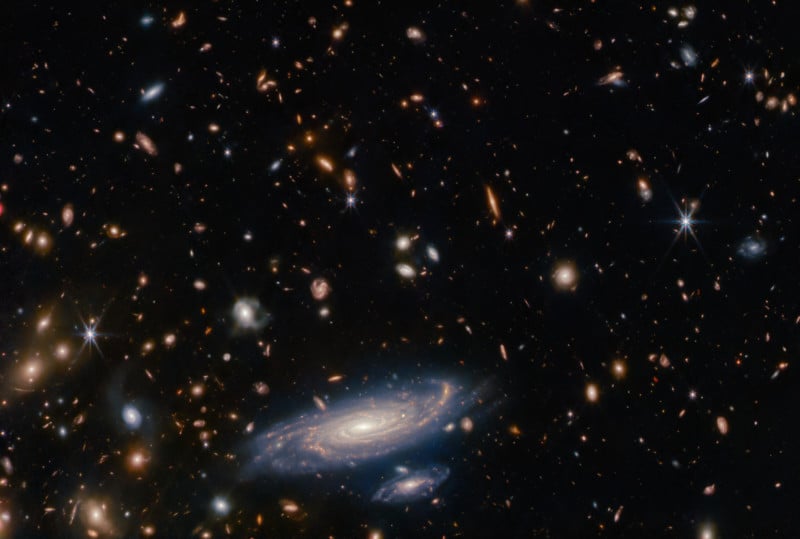Webb Telescope Photographs a Milky Way-Like Spiral Galaxy
![]()
The James Webb Space Telescope has recently captured a large spiral galaxy that resembles Earth’s own Milky Way Galaxy that exists a little over a billion light years away.
The photo was released as the European Space Agency’s (ESA) picture of the month from the James Webb Space Telescope and was featured by both the New York Times and picked up by Engadget. Curiously, though, the photo wasn’t included in the more traditional outlets for James Webb Space Telescope photos — neither NASA nor the Webb Media team published about it — despite the interesting subject matter.
The large spiral galaxy shown above is in the lower section of the full photo (below) and it — named LEDA 2046648 and situated more than a billion light-years away in the constellation Hercules — is accompanied by a “profusion” of smaller and more distant galaxies.

The ESA explains that one of Webb’s main science goals is to observe distant galaxies from the early universe to help astronomers better understand how the formed, how they are evolving, and what they are made of. To do this, Webb has a series of infrared cameras that capture different wavelengths of the spectrum.
“Webb’s keen infrared vision helps the telescope peer back in time, as the light from these distant galaxies is redshifted towards infrared wavelengths,” the ESA says.
As part of this process and in order to take full advantage of the telescope’s capability, astronomers and engineers must first calibrate the telescope’s instruments and systems.
Each of Webb’s instruments contains a what the space agency describes as a labyrinthine array of mirrors and other optical elements that redirect and focus starlight gathered by Webb’s main mirror.
This particular photo is part of a commissioning campaign for the telescope’s Near-InfraRed Imager and Slitless Spectrograph (NIRISS).
“As well as performing science in its own right, NIRISS supports parallel observations with Webb’s Near-InfraRed Camera (NIRCam),” the ESA explains. “NIRCam captured this galaxy-studded image while NIRISS was observing the white dwarf WD1657+343, a well-studied star. This allows astronomers to interpret and compare data from the two different instruments, and to characterize the performance of NIRISS.”
The full-resolution photo (4218 by 2843 pixels) can be downloaded from the ESA’s website.